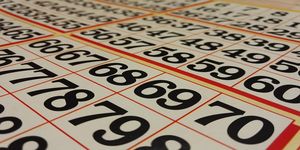Maths Year Six Planning Term One
Discover schemes of work, lesson plans, classroom worksheets and interactive activities to develop skills in maths for Year Six in Key Stage Two to teach about number and place, addition and subtraction, multiplication and division and fractions
Number and Place Value
Explore and describe the place value of the digits in different numbers to millions when comparing and ordering matching sets of numbers

(A) Number Millions
Investigate, order and compare the value of the digits that comprise different sets of numbers with up to seven digits
Number Calculations
Practise using mental and formal written calculations to solve number problems for addition, subtraction, multiplication and division including using exchange between place value

(C) Addition and Subtraction Sums
Practise mental and formal written methods of addition and subtraction calculation working with different numbers in millions and decimals

(D) Calculation Solutions
Use standard written methods of addition and subtraction to check calculated sums using inverse operations and solve problems with multi-step solutions

(F) Multiplication Methods
Practise using standard written methods for multiplication to solve abstract and real world problems
Fractions
Investigate how to illustrate and use the values of different fractions to support solving problems involving addition, subtraction and equivalence

(I) Fraction Sums
Model and record the steps that can be used to solve problems by adding and subtracting pairs of non-unit and mixed number fractions

(H) Fraction Changes
Identify and illustrate how to change and convert the values of different fractions using equivalence, simplification and conversion between mixed and improper fractions
-

Theme Park Visit
Practise identifying and calculating the timing and duration of rides and events when visiting a theme park on a special family trip
-

Family Holiday Trips
Identify and record how to compose and publish recounts using adverbials of time and place to describe family holidays to different places in the world
-

Money Multiplication
Explain and model how to use standard written calculation methods to multiply money amounts in pounds and pence when solving number problems
-

Sport Teams
Explain and model how to use brackets and dashes to add extra information to sentences describing how to play sports and games as part of a team
